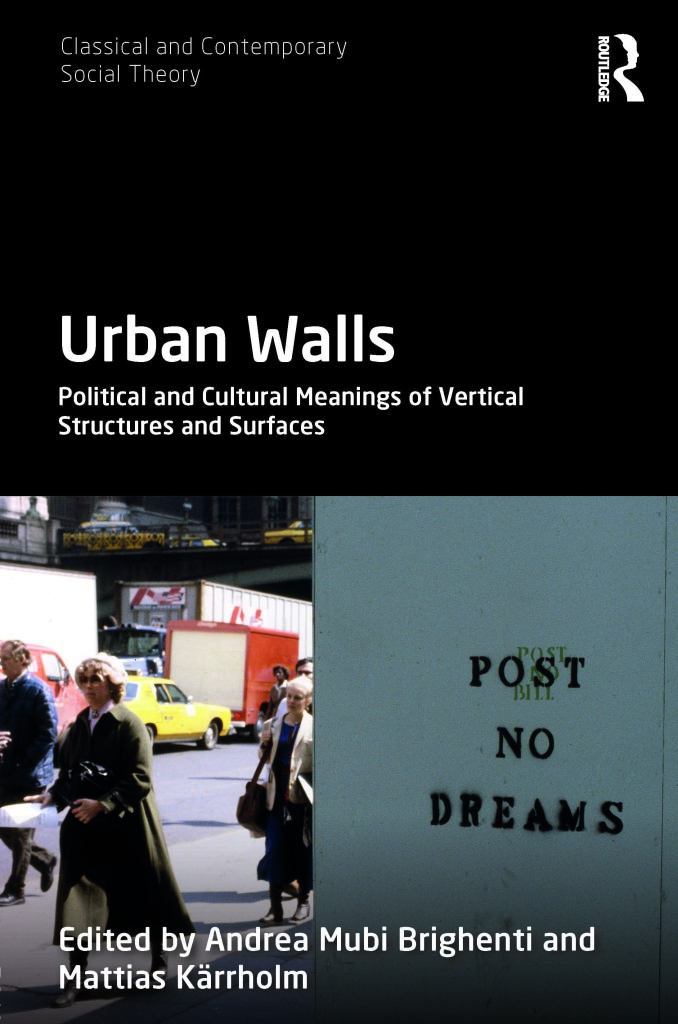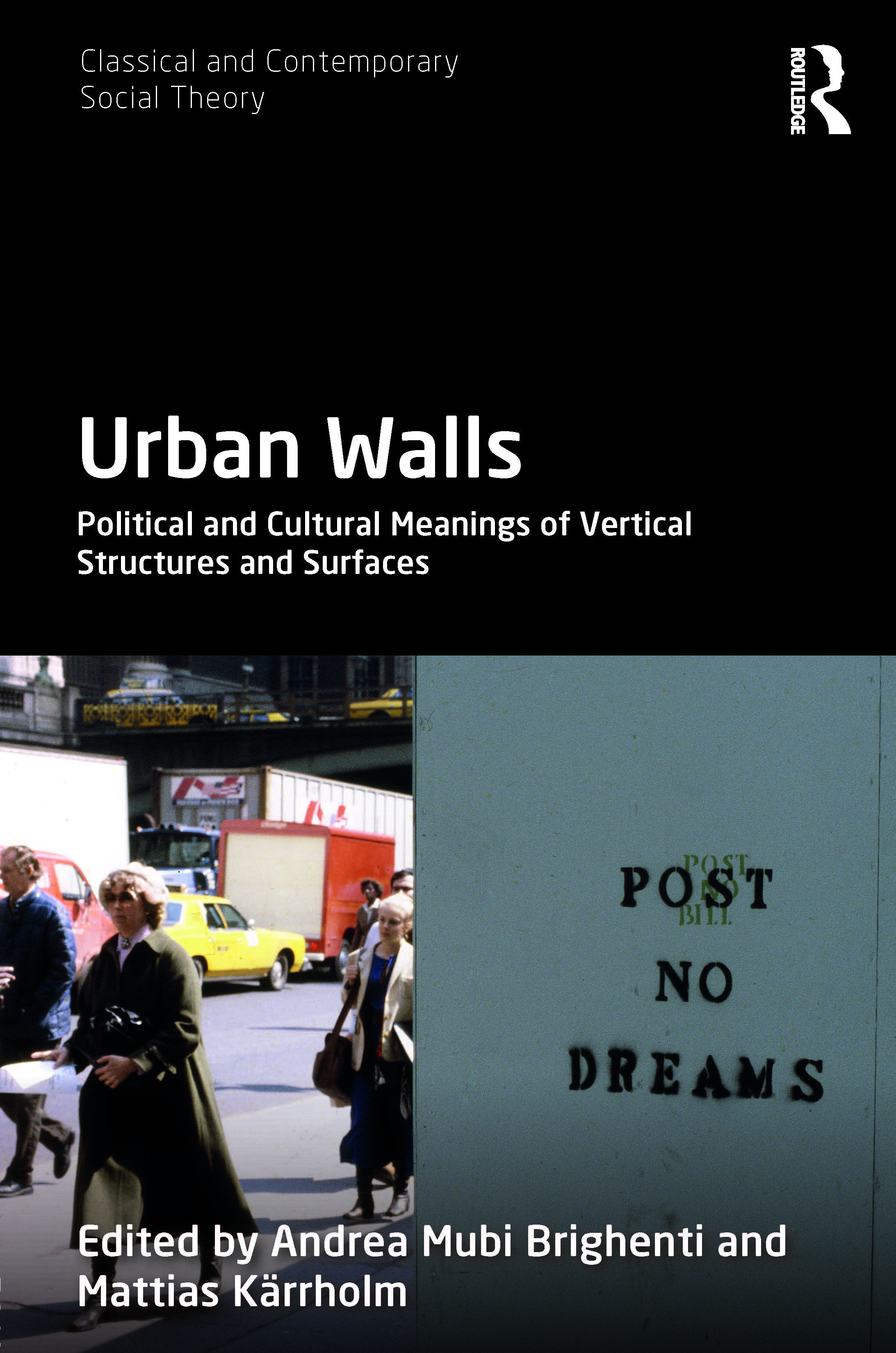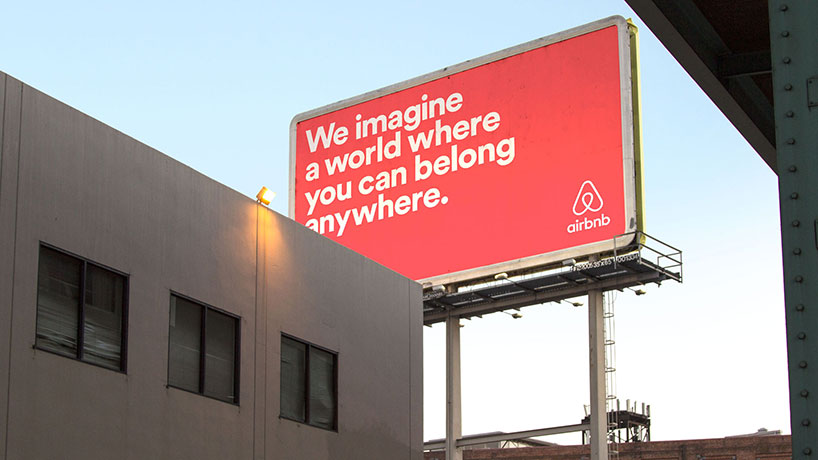Volume Edited by Andrea Mubi Brighenti & Mattias Kärrholm. Published by Routledge – Classical and Contemporary Social Theory Series, 2018.

In recent years, an increasing number of separation walls has been built around the world. Walls built in urban areas are particularly striking in that they have exacted a heavy toll in terms of human suffering. At the same time, however, homeless and displaced people, unprotected by any walls, often terrorised by irregular militias or evicted by the state police, have likewise endured terrible ordeals. From time to time, walls are invoked, promised, contested, challenged, struggled over. They can be protective, but the protection they grant is always selective to a significant degree. Not only does the fundamental ambivalence of walls seems intrinsic, but the spatial functioning cannot be reduced to a black-and-white picture – walls as either simply ‘good’ or ‘bad’. This collection invites to inquiry into the complexities of the social life of walls. Urban and urbanised spaces are here observed as veritable laboratories of wall-making, places where their consequences become most visible. In perspective, the essays collected here also invite to consider how urban walls today extend into media spaces, drawing a complex geography of separation, connection, control and resistance.
Table of Contents
Introduction. Andrea Mubi Brighenti & Mattias Kärrholm, The Life of Walls – In Urban, Spatial And Political Theory
Part I. The Politics of Urban Walls
Alison Young, On Walls in the Open City
Florine Ballif, Dismantling Belfast Peacelines. New physical arrangements in amidst conflict
Pete Chambers, Walling Through Seas. The Indian Ocean, Australian border security, and the political present
Claudio Minca & Alexandra Rijke, Walls, walling and the immunitarian imperative
Pedro Victor Brandão & Andrea Pavoni, Screening Brazil: Footnotes on a Wall
Part II. Cultures of Walls
Ella Chmielewska, Afterimages of Warsaw. Of Walls and Memories
Emma Nilsson, Wall Terrains. Architecture, body culture and parkour
Karin Grundström, Gating housing in Sweden: Walling in the privileged, walling out the public
Sabina Andron, The Right to the City Is the Right to the Surface: A Case for a Surface Commons
Jérôme Denis & David Pontille, The Multiple Walls of Graffiti Removal. Maintenance and Urban Assemblage in Paris
Lachlan MacDowall, Walls as Fleeting Surfaces. From Bricks to Pixels, Trains to Instagram
Endorsements
Walls and cities have long been partners, but their relationship has been understudied. This creative and important collection takes the social and political work of the urban wall seriously. Rather than a self-evident object, the wall becomes lively, talkative, mobile, and ambivalent, dividing yet also connecting. A valuable and original contribution.
Nicholas Blomley, Professor of Geography, Simon Fraser University, Vancouver
It is a remarkable feat for an edited volume to read as cohesively and with such strong focus as Urban Walls. The walls included here (violent walls, but also vulnerable ones; aquatic, immunising, yet totally exposed and medialised walls; affective and playful, immaterial and palimpsestic walls) are marked by the wounds of history, geography and politics that surround them but also that are generated by them. These walls feel as material and fleshy as if we were placing our hand on their surface.
Andreas Philippopoulos-Mihalopoulos
Professor, Law & Theory, University of Westminster, London
An instructive and compelling examination of walls in their multiple present forms. The emphasis on the material and vertical puts this at the heart of contemporary debates. Historically situated, richly illustrated, and with a view to wider themes as much as empirical detail, this is an important contribution to politics, geography and urban studies.
Stuart Elden, Professor of Political Theory and Geography, University of Warwick

